- News
- Reviews
- Bikes
- Accessories
- Accessories - misc
- Computer mounts
- Bags
- Bar ends
- Bike bags & cases
- Bottle cages
- Bottles
- Cameras
- Car racks
- Child seats
- Computers
- Glasses
- GPS units
- Helmets
- Lights - front
- Lights - rear
- Lights - sets
- Locks
- Mirrors
- Mudguards
- Racks
- Pumps & CO2 inflators
- Puncture kits
- Reflectives
- Smart watches
- Stands and racks
- Trailers
- Clothing
- Components
- Bar tape & grips
- Bottom brackets
- Brake & gear cables
- Brake & STI levers
- Brake pads & spares
- Brakes
- Cassettes & freewheels
- Chains
- Chainsets & chainrings
- Derailleurs - front
- Derailleurs - rear
- Forks
- Gear levers & shifters
- Groupsets
- Handlebars & extensions
- Headsets
- Hubs
- Inner tubes
- Pedals
- Quick releases & skewers
- Saddles
- Seatposts
- Stems
- Wheels
- Tyres
- Health, fitness and nutrition
- Tools and workshop
- Miscellaneous
- Tubeless valves
- Buyers Guides
- Features
- Forum
- Recommends
- Podcast
TECH NEWS
First Look: Cannondale SuperSix Evo 2020 - radical redesign with aero and comfort improvements
The SuperSix Evo is dead. Long live the SuperSix Evo. Cannondale has totally redesigned its flagship carbon road race bike with an all-new frame that is more aerodynamic, stiffer and comfortable than the bike first introduced in 2011 and last updated in 2015, with wider tyre clearance and revised geometry with choice of rim or disc brakes.
At a glance:
- Light, stiff and aero carbon frame
- 30 watt less drag than old Evo
- 18% more compliance
- 866g frame weight for a size 56cm
- Disc and rim brake options
- SpeedRelease 12mm thru-axles
- Integrated handlebar and stem
- New Knot 45 wheels
- Dropped seat stays for improved comfort and aero
- 30mm tyre clearance
- Full internal cable routing
- Prices: £1,999.99 to £8,999.99
What's it like to ride? Read the first ride impressions article here.
A quick history lesson before we get into the nitty-gritty. It was 2008 when Cannondale first developed the SuperSix, a carbon race bike built at its Bedford facility. The SuperSix Evo moved the weight and stiffness goalposts as well as adding comfort to the mix in 2011, and in 2015 the second generation Evo got even lighter, stiffer and gained disc brakes for the first time.
Development for the new SuperSix Evo goes back three or four years with an investment in resource and staff, hiring Damon Rinard from Cervelo and aero specialist Nathan Barry direct from completing a PhD in Applied Aerodynamics. This investment resulted in the SystemSix aero bike launched last year, a bike that Cannondale’s David Devine says taught them how to make really fast bikes and to win races.
The new SuperSix Evo has been a long time coming. It has long been considered one of the best road bikes and it’s been a personal fave for its blend of weight, stiffness, comfort and great handling. How do you improve on perfection?
Cycling has changed since the original Evo was launched, when weight and stiffness were the key pillars of bike design, with disc brakes and aerodynamics just a speck on the horizon. With the SystemSix now catering for racers who value the benefits of aerodynamics, the target rider for the SuperSix Evo has shifted to competitive cyclists who enjoy riding fast and are motivated by style and fun as much as pinning on a race number every weekend.
Cannondale set itself the goal of creating a bike that maintained the low weight, handling and ride quality, whilst improving comfort and aero performance, introducing size-specific tubing and making it easy to service with Inteliport cable routing. Let’s take a closer look.
Speed is king
It’s designed to be a fast bike. “Aerodynamic efficiency has a huge effect on speed and performance in cycling, so reducing drag on the new SuperSix Evo was a priority,” says Nathan Barry, Cannondale Design Engineer. “But it was equally important that the new bike retains the lightweight, responsiveness and composed ride that made the previous iterations so successful.”
The new SuperSix Evo now brings aerodynamics into the frame design in a much more significant way than its predecessor, whilst maintaining the low weight the old bike was famed for. There’s more integration as well, as most modern race bikes are seeking to route all cables and hoses inside the bike, and Cannondale has long been a fan with System Integration a long-running design principle. There’s a new Knot handlebar, stem, seatpost and wheels.
The results are that at 48.3kph (30mph), the new SuperSix Evo produces less drag at all wind angles, from zero to 20-degrees, a range which Cannondale reckons encompass 95% of riding conditions. The yaw weighted average drag reveals the differences in power at this tested speed, the SuperSix Evo producing nearly 9 watts less drag than its nearest rival, the Specialized S-Works Tarmac, data which you can see in the graph below.
Cannondale tests at 48.3kph (30mph) because it is the test speed of the tunnel test and is a good fit for racing, it tells us. It conducted this wind tunnel testing against key rivals including the Specialized S-Works Tarmac Disc, Cervelo R5 Disc, BMC Roadmachine SLR 01 and the Trek Emonda SLR Disc. All bikes were tested with Dura-Ace Di2 builds, with two water bottles fitted.
To balance the needs of aerodynamics, stiffness and weight, Cannondale has developed a new family of tube shapes that balance these competing demands. There were clear targets, the new bike had to retain the weight and stiffness of the previous bike with drag reduced as much as possible without sacrificing those key characteristics.
“The technology that really helped make this possible was the tube cross-section studies,” explains Nathan Barry. “This started as parallel research in advance of what became the new Evo. I was trying to find a way that we could reduce drag on a bike without changing the stiffness or increasing the weight, but also trying to keep a classic low profile aesthetic.”
“Typically when using deep airfoil sections you end up with tubes that are geometrically much stiffer in plane than out of plane. In the past, this resulted in aerodynamically optimised road bikes (and TT bikes) that were very floppy out of plane. We have since solved the lateral stiffness issues, on bikes like SystemSix. But you still have tubes with a deep chord. The larger surface area needed to use airfoil sections adds weight. The industry is getting better at this, but in certain tubes, you approach a material limit. On the second generation Evo the downtube and top tube were at the material limit for strength so we could not make the walls any thinner,” explains Nathan.
This development led to a heavily truncated airfoil profile used for the main tubes. “After iterating through many different combinations of these highly truncated low aspect ratio airfoil sections, we arrived at the tubes you see on this new SuperSix Evo," explains Nathan. "The downtube is the same circumference as the previous generation bike (so the amount of material is the same) it is really just redistributed into this new form. That allows us to maintain stiffness and weight while reducing drag.”
The new tube profile reduces drag by as much as 30% compared to the previous Evo with an increased in stiffness and only the smallest increase in overall frame weight. Impressive.
It’s not just the frame and fork that matters in the battle against wind resistance. Cannondale has developed new Hollowgram 45 Knot wheels which it claims provide 2.6 watts less drag than rival Zipp 303 NSW wheels. Another 9-watt waving comes from the new Knot integrated handlebar and stem when compared to a regular handlebar setup
Remember, these are Cannondale’s claims, not ours, we’re just quoting the numbers they provided. Obviously, independent testing is going to be needed to really see where the new Evo stacks up against its key rivals. In fact, Cannondale even adds that the new SuperSix Evo compares well alongside a dedicated aero bike like the Scott Foil, which would be impressive.
Also helping to improve aerodynamics are the internally routed cables. Cannondale has enlarged the front of the head tube to provide space for the cables and brake hoses to be routed directly from the stem into the frame to both reduce drag and give a very clean look. Bikes with mechanical groupsets see the cables routed externally into the downtube port.
Wondering how the new SuperSix Evo compares to the SystemSix? At the same 48.3kph testing speed, the SystemSix saves 22 watts over the Evo. So if you want to race, an aero bike still has the trump card but it’s clear the new Evo closes the gap compared to the previous version.
“So whilst our new SuperSix Evo is on par with what many brands consider their “aero” platform, there is still a significant performance difference between it and SystemSix,” adds Nathan Barry.
Comfort matters
Comfort was also one of the previous Evo's big trump cards. For a race bike, it was remarkably smooth and sometimes made us question why you would need an endurance bike.
The new Evo bests the previous bike thanks both to increased tyre clearance and those dropped seat stays. The new SAVE stays, along with a new internal seat clamp and 27 Knot seat post are claimed to improve compliance by 18% compared to the old model.
Dropped seat stays are becoming very common on road race bikes and you might leap to the conclusion that they’re all just copying each other. In reality, the designers are all chasing the same goals of aerodynamics, stiffness and compliance and dropping the seat stays is a way of achieving them. Cannondale first dabbled with dropped stays on its SystemSix aero bike which is where the development for the new Evo came from.
Tyre clearance has increased substantially, the new Evo will comfortably take up to 30mm tyres, measured with 6mm of clearance. So in reality, a wider tyre will likely fit depending on rim width and how close you're comfortable running the tyre to the frame. It results in a bike that is more versatile because you’re not beholden to restricted tyre clearance that has long stymied race bikes of the past.
For context, that tyre clearance is where endurance bikes were a few years ago, so in 2020 to have a race bike with such generous clearance shows how far the wide tyre trend has come.
Up front, the new SAVE handlebar also offers additional comfort over a regular bar as the shape has been chosen to provide a bit of deflection. It’s also aerodynamic to reduce the frontal surface area, with all cables internally routed.
Frame details
Cannondale has refined the geometry to suit the rider who is less about racing with a taller stack and shorter reach, which places it neatly between the SystemSix and the Synapse. There are eight sizes, 44 to 62cm, with a smoother stack and reach progression compared to the previous Evo. All frames are now size-specific, which Cannondale has dubbed Proportional Response.
Braking choices include rim and disc brakes, with direct mount for the former and 12mm SpeedRelease for the latter, with internal cable and hose routing. A new internal seat post clamp, using a single sliding wedge, weighs just 13g, dropping an impressive 35g from the previous bike. The seat post diameter is the same 25.4mm as before.
All bikes are made from carbon fibre with a choice of standard carbon and hi-mod carbon frames. Frame weight for a size 56cm is a claimed 866g with a hi-mod frame, 976g for the standard carbon, with a 389g fork and 162g seat post.
The SuperSix Evo range
The SuperSix Evo range will feature six disc brake models and two rim brake options for men in seven sizes from 48 to 62cm. Women get three disc and one rim brake choice in four sizes from 44 to 54cm. Prices will range from £1,999.99 to £8,999.99
Selected bikes will be specced with a ready-to-activate Power2Max power meter, which costs €490 to activate. First offered on the SystemSix, Cannondale tells us it has been well-received, offering as it does an easy and relatively affordable upgrade path to power for those that feel they need it.
The range kicks off with the Carbon 105 model costing £199.99 With a Shimano 105 groupset and Fulcrum Racing 900 wheels.
The Carbon Disc 105 adds hydraulic disc brakes and costs £2,299.
This Carbon Disc Force eTap AXS (£4,799.99) is the cheapest eTap model and the most expensive with the standard carbon frame before you make the leap to hi-mod.
The most affordable hi-mod bike is the Disc Ultegra coming in at £3,999.99.
The range tops out with the Hi-Mod Disc Dura-Ace Di2 with the new HollowGram 45 Knot wheels and matching handlebar and stem costing a cool £8,999.
Here's the full price range:
| SuperSix Evo HM Disc D/A Di2 | £9,299.99 |
| SuperSix Evo HM Disc Ult Di2 | £6,499.99 |
| SuperSix Evo HM Disc D/A | £5,499.99 |
| SuperSix Evo Crb Disc Ult Di2 | £5,499.99 |
| SuperSix Evo Crb Disc Frc eTap | £4,799.99 |
| SuperSix Evo HM Disc Ult | £3,999.99 |
| SuperSix Evo Crb Disc Ult | £2,999.99 |
| SuperSix Evo Crb Disc Ult | £2,999.99 |
| SuperSix Evo Crb Disc Ult | £2,999.99 |
| SuperSix Evo Crb Ult 2 | £2,499.99 |
| SuperSix Evo Crb Disc 105 | £2,299.99 |
| SuperSix Evo Crb Disc 105 | £2,299.99 |
| SuperSix Evo Crb Disc 105 | £2,299.99 |
| SuperSix Evo Crb Disc 105 | £2,299.99 |
| SuperSix Evo Crb 105 | £1,999.99 |
| SuperSix Evo Crb 105 | £1,999.99 |
| SuperSix Evo Crb 105 | £1,999.99 |
| SuperSix Evo Crb 105 | £1,999.99 |
| SuperSix Evo Crb 105 | £1,999.99 |
| SuperSix Evo Crb 105 | £1,999.99 |
What's it like to ride?
I got to ride the new bike, albeit only for a short distance, at the worldwide launch in Vermont (where the Topstone Carbon was also unveiled) on some of the most poorly surfaced roads I’ve ever seen and in weather conditions that deteriorated to the point we all finished the ride soaked.
Bike launches only ever provide enough time for a short ride, good for a first impression but not sufficient to really get under the skin of the new product. Add to that the fact you’re riding unfamiliar roads, and in my case a dose of jet lag, and it’s not ideal at all, but I’ll be getting my hands on a bike for UK testing so a more comprehensive review is in the pipeline.
I can tell you a few things based on this first ride. It’s abundantly clear all the changes produce a bike that feels sharper and more precise than the old SuperSix Evo, yet has a welcoming familiarity in its handling and ride quality.
Read the full first ride here.
More info at www.cannondale.com
David worked on the road.cc tech team from 2012-2020. Previously he was editor of Bikemagic.com and before that staff writer at RCUK. He's a seasoned cyclist of all disciplines, from road to mountain biking, touring to cyclo-cross, he only wishes he had time to ride them all. He's mildly competitive, though he'll never admit it, and is a frequent road racer but is too lazy to do really well. He currently resides in the Cotswolds, and you can now find him over on his own YouTube channel David Arthur - Just Ride Bikes.
Latest Comments
- Ashok C 2 hours 32 min ago
The comment about the possible lack of mudguard mounts is absolutely brilliant! Cheers.
- hawkinspeter 3 hours 30 min ago
I used an iPump Twist a couple of times and it's not exactly designed for pushing a lot of air but didn't give me any issue apart from taking a...
- ktache 3 hours 57 min ago
I think most would be shocked by the death toll is at least four a day.
- hapaxlegomenon 4 hours 22 min ago
these look like they run super Duper narrow!
- hapaxlegomenon 4 hours 43 min ago
I agree on all points. In case you're wondering, this specific model runs a bit narrower than most other fizik SPD shoes that I've worn in the past...
- chrisonabike 5 hours 39 min ago
Ultimately the problem is humans. That is amplified by "mass motoring" - but even "professional drivers" mess up and kill....
- Miller 7 hours 10 min ago
Over on weight_weenies there's 310 pages of discussion on Light Bicycle so have a look there.
- Rendel Harris 7 hours 11 min ago
It's a thing... https://www.amazon.co.uk/Pilot-Carbon-Look-Decorative-Adhesive-Carbon/dp...
- nappe 8 hours 54 sec ago
Went past this just after it had happened, straight road, just after a mini roundabout with traffic calming all the way down the road......






















































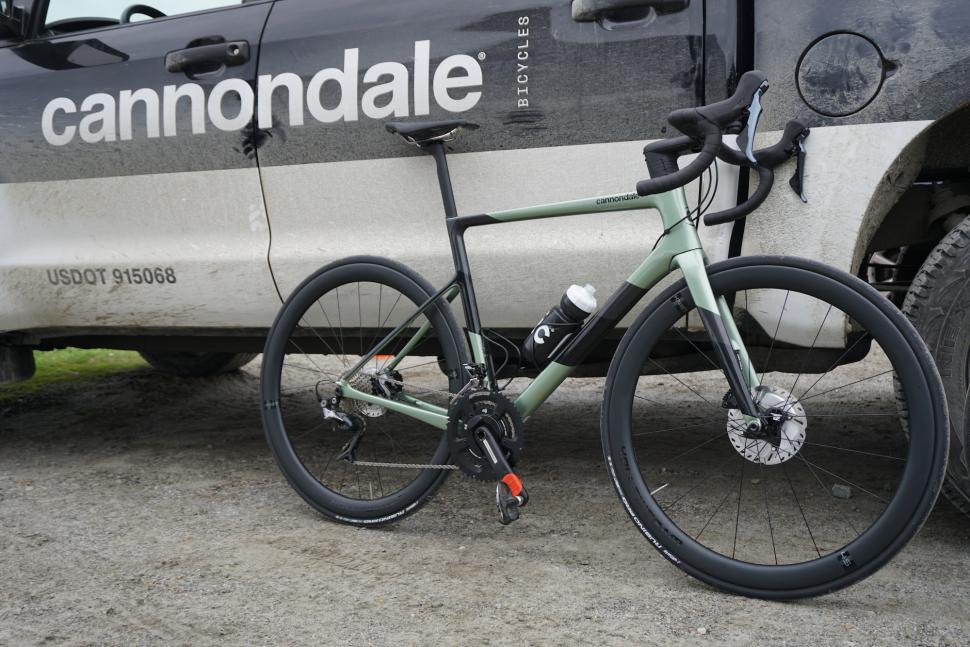

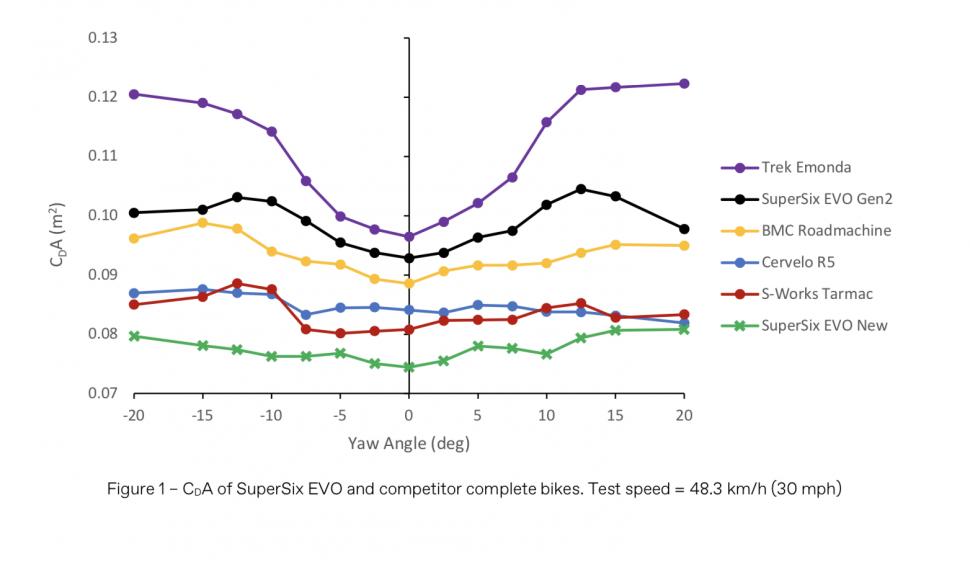
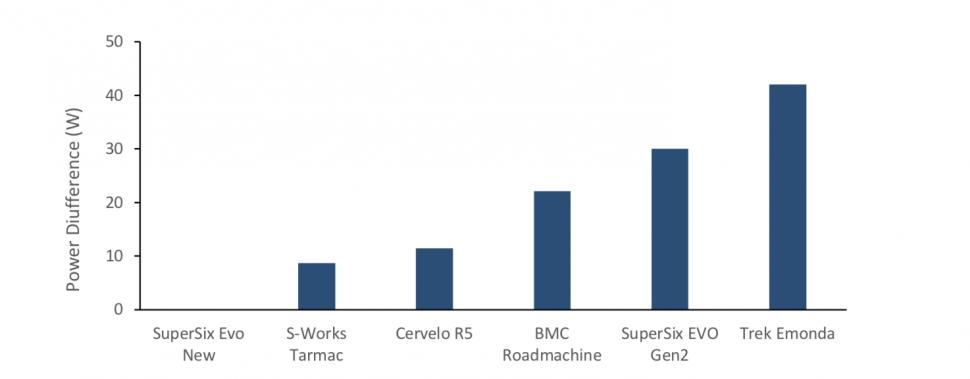

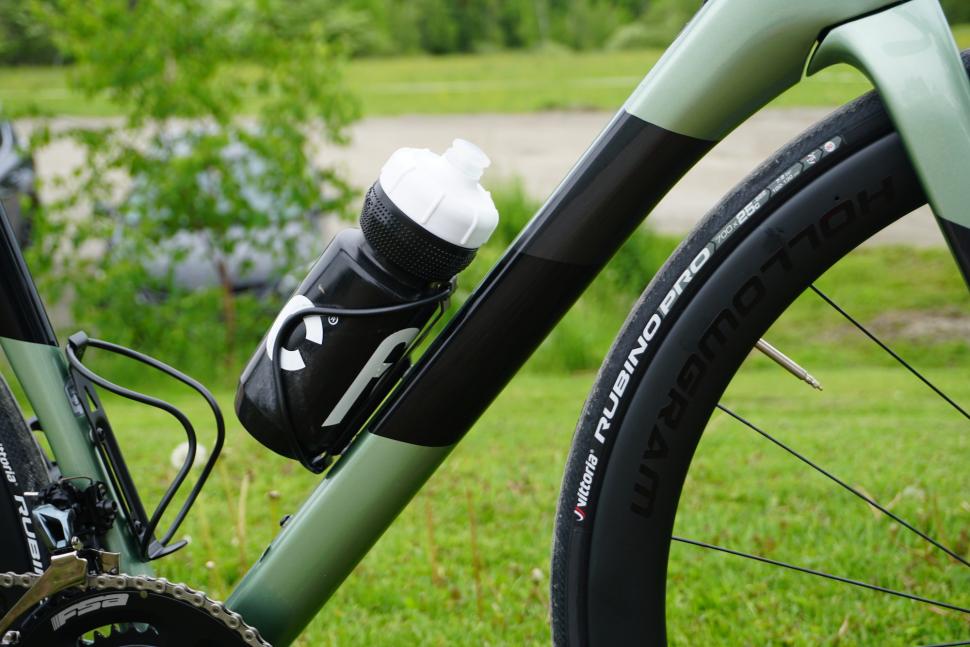


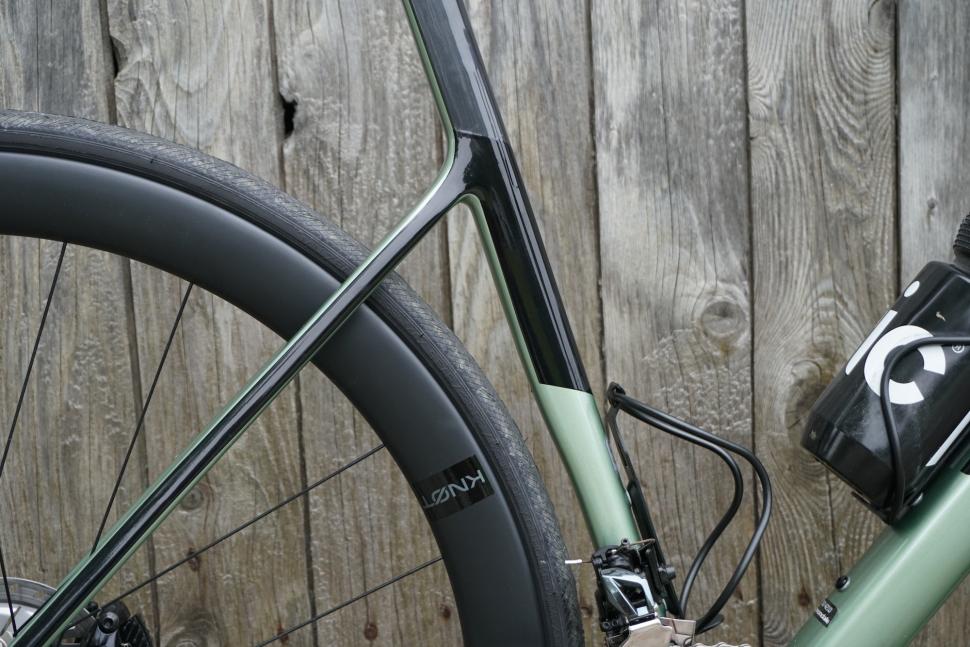
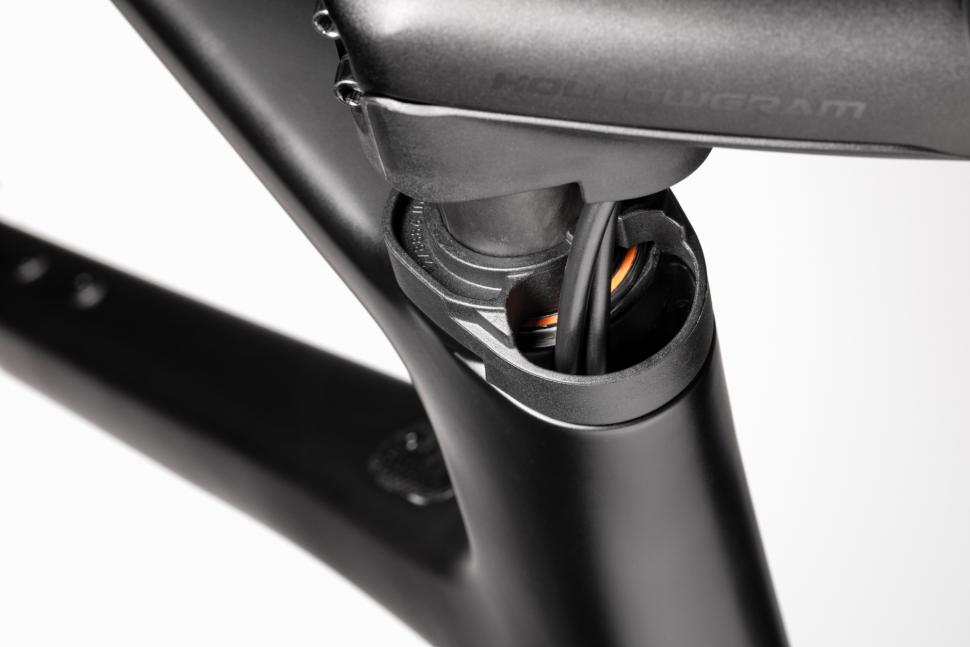
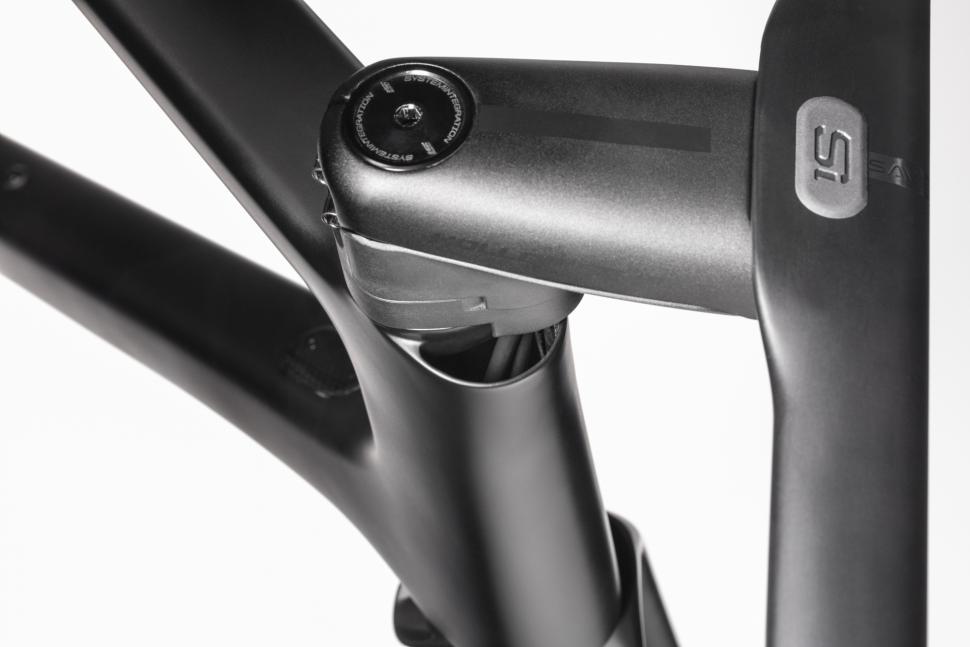
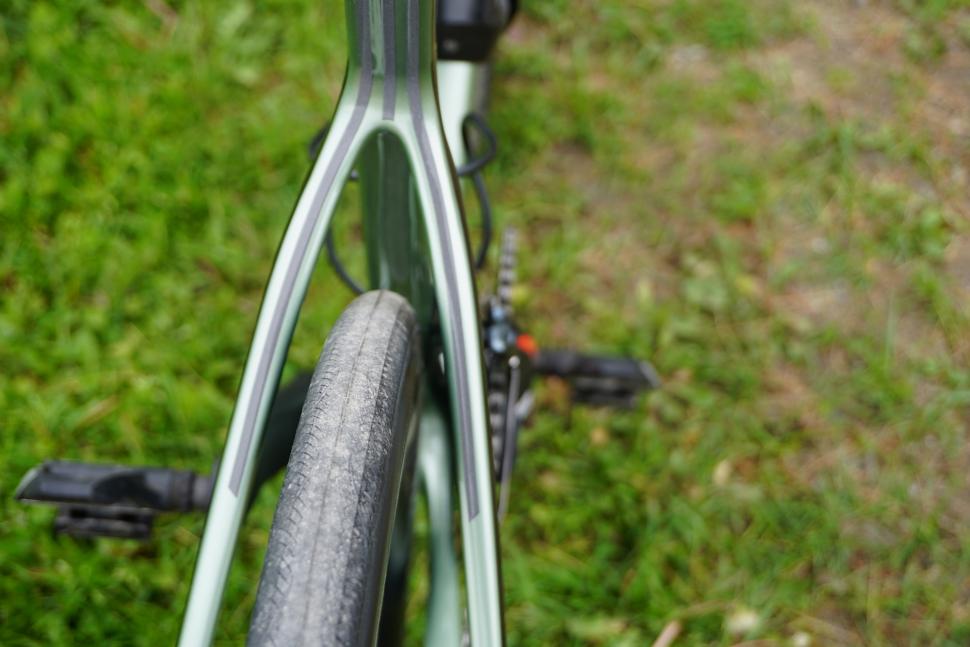


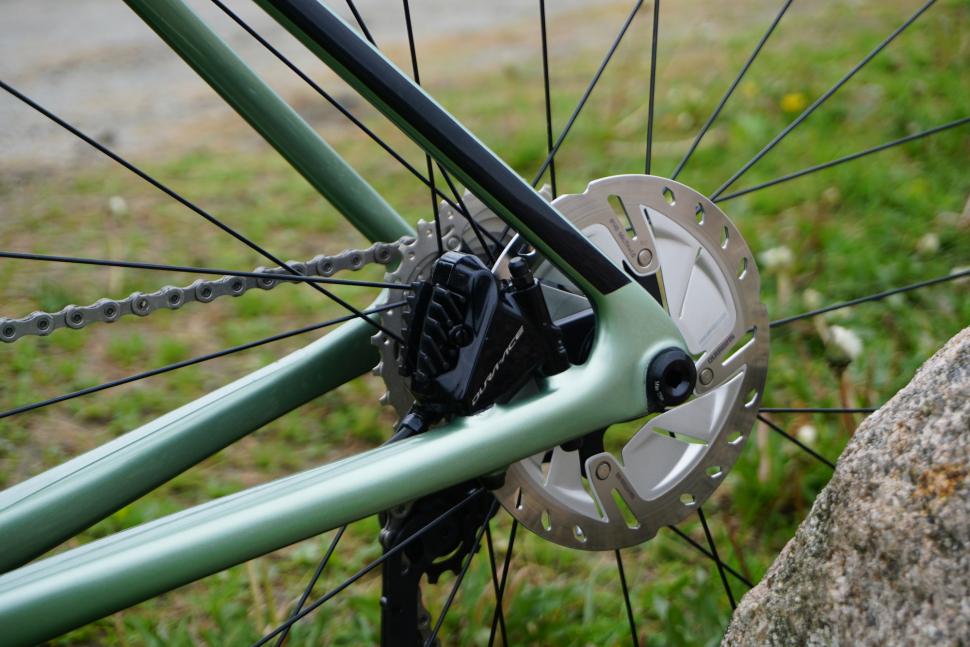
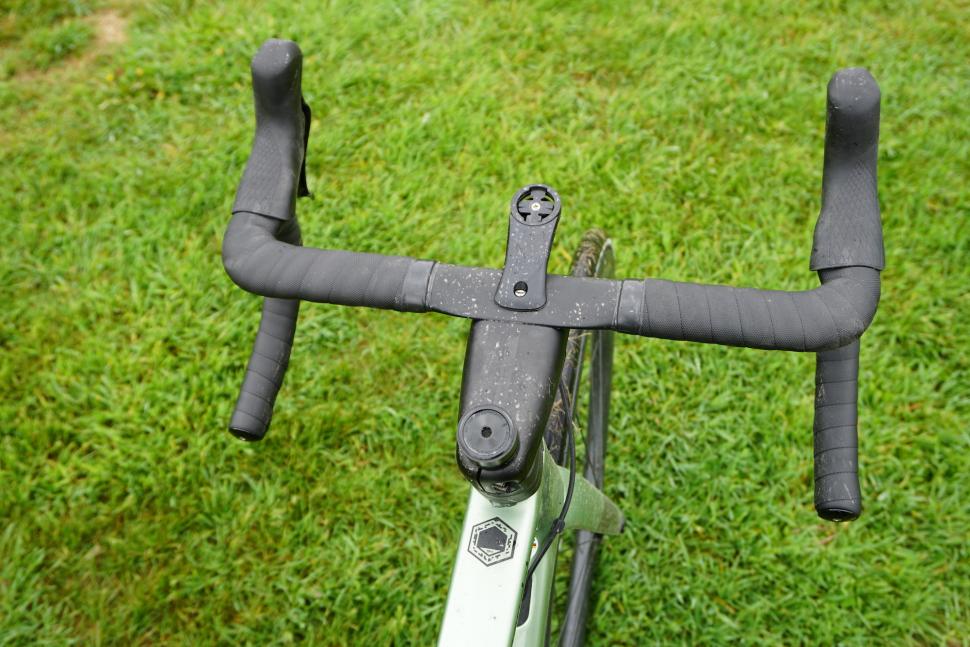
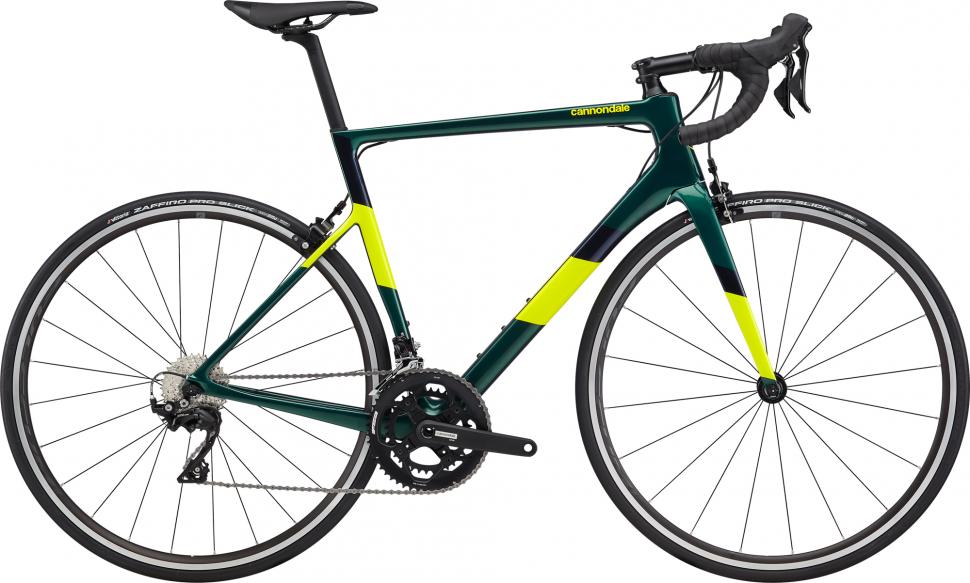

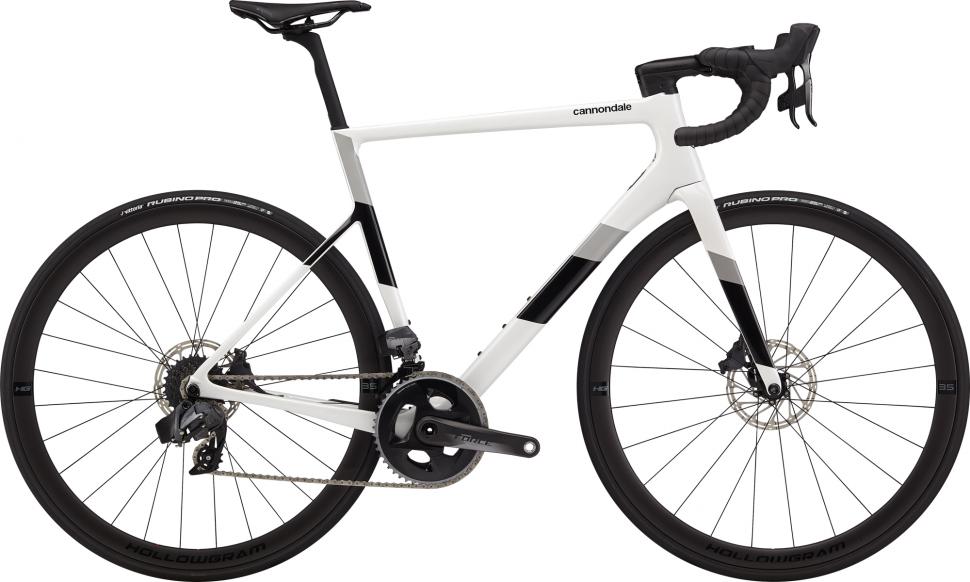
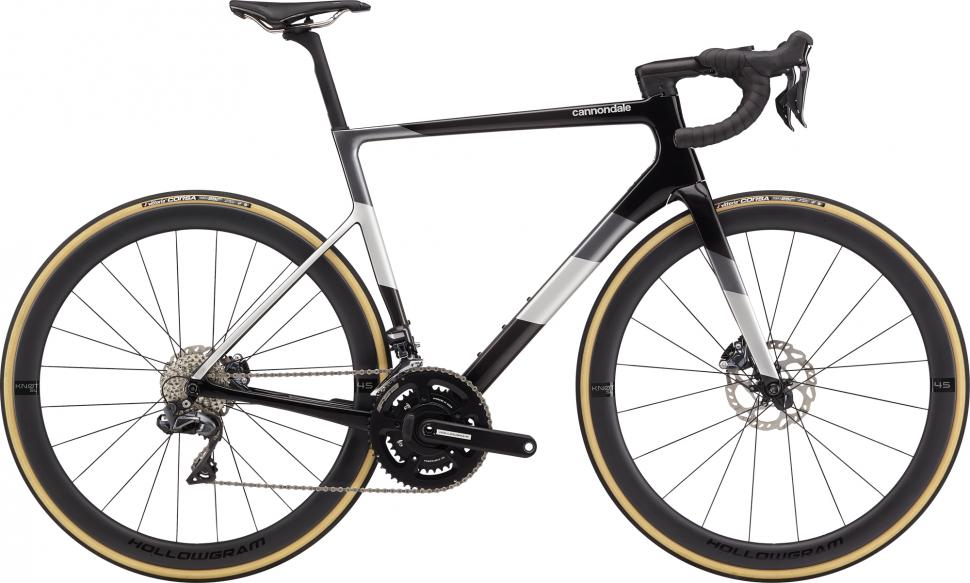
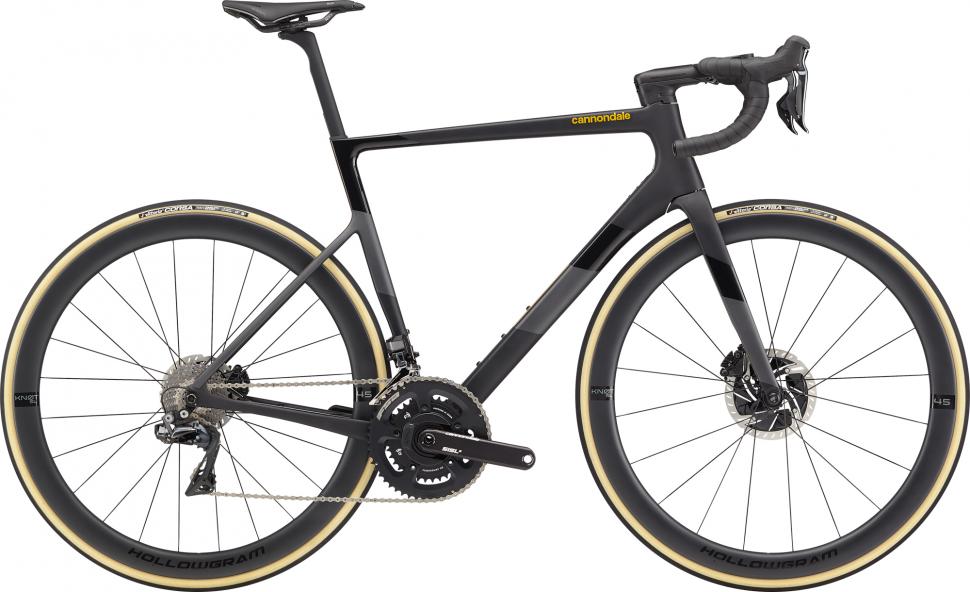

Add new comment
9 comments
Just like the CAAD 13 this new Supersix just looks boring. Generic shaped frame and dull paint jobs, if you told me it was an open mould design I wouldn't have been surprised.
Also I see the rim brake options are only for the heavier frame, is there a rim brake Hi Mod frameset available?
I find it such a shame that Cannondale have ditched their distinctive look. They were pretty much the only vaguely different bike left in today's bland peloton which is full of fat tubes and sloping top tubes.
My SuperSix Evo HM is from 2016 and will be the last I buy if this is the direction Cannondale are heading down. As a chronically fatigued new father, I'm unlikely to notice any difference between the two models anyway so if I ever fancied freshening things up then I'd be more inclined to have it professionally resprayed then buy this Cannontrek Tarmac.
Note to Cannondale: get your old branding back, get the (almost) horizontal top tube back and stick with the skinny tubes.
As a long-time lover of Cannondale I was looking to update my supersix evo hi mod (etc. etc.). Just started to do my research and I saw this review, felt for the first time ever I would post a comment on a forum. I registered on the website purely to leave a comment here.
I don't really know where to begin but I’ll try.... this is hideous and derivative. The colours are bland and the branding non-existent which I wouldn't mind only it now looks like so many other bikes you'd have to say why bother buying a Cannondale at all. Which is exactly what I decided i.e. I won't be buying one of these.
Signed
Very disappointed ex Cannondale customer
Just what the world needs: proprietary headset spacers.
Yeah, imagine trying to find the right ones in 10 years time.
(TBF Cannondale aren't the only ones to go down this route)
Where will this trend towards ever wider tyres take us?
drop bar pug.jpg
Ew! They turned one of the prettiest bikes on the market into one of the ugliest. Why?
Wow they’ve managed to create a bike that looks just like a Boardman or a Tarmac.
This reminds me of the Alpha 13 bikes that Halfords tried to launch few years ago.